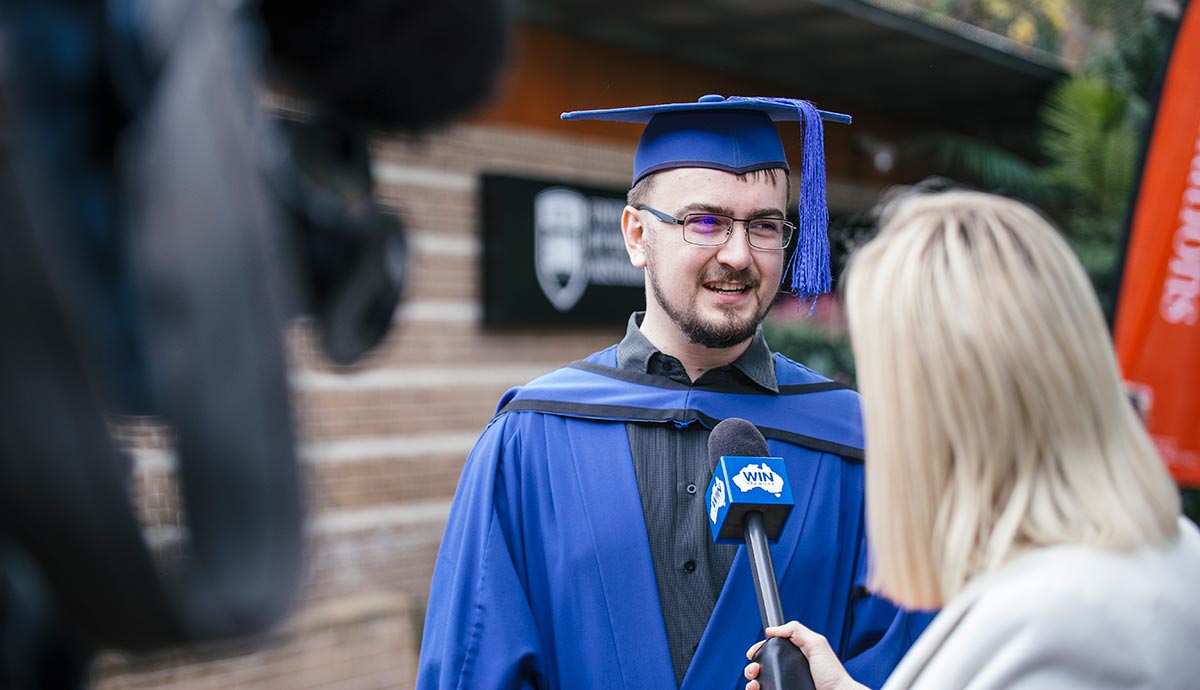July 21, 2016
Young satellite designer wins University medal
Massachusetts Institute of Technology beckons for electrical engineering graduate.
At just 23, electrical engineer Brenden Butters has already invented a new high-tech satellite, developed technology that allows search and rescue teams to ‘see’ through walls, and designed a smartphone app that helps blind people navigate their surroundings.
The high achieving Dean’s Scholar, who celebrated his graduation at UOW this week, studied electrical engineering and advanced maths, achieving a High Distinction in every subject and earning a 2016 University Medal.
He’s now off to the prestigious Massachusetts Institute of Technology (MIT), the highest rated university in the world for electrical engineering, to complete a PhD in radio frequency circuits and systems, which are used for WiFi, mobile phones and radio.
“I have always loved electrical engineering and for a long time I have been fascinated by high frequency and high speed systems,” Brenden said.
“As frequencies increase some really weird things can happen, and we have to be very creative in our solutions to problems.”
As an undergraduate student at UOW, Brenden led a project with senior academics and PhD students to design a low-cost, high performance satellite for future satellite missions.
The tiny 4kg ‘CubeSat’ offers very high communication system speeds and on-board processing capability, as well as new power generation and thermal control systems, which Brenden developed.
He has also been heavily involved in a project with Professor Salim Bouzerdoum on a through-the-wall radar imaging (TWRI) system that can ‘see' objects behind walls, doors and other opaque materials.
“This project is really exciting. It has many applications from helping police in hostage situations to locating people in collapsed buildings after natural disasters,” Brenden, who developed the imaging algorithms and electronics hardware, said.
“As part of the project, I designed a large antenna positioning system that can position an antenna anywhere within a 2m by 2m square with sub-millimetre accuracy. I also designed an acquisition system that generates and transmits electromagnetic radiation, and detects the reflected radiation for processing.
“I’m just putting the finishing touches on a radar set that the University will utilise to conduct future TWRI experiments.”
In his ‘spare time’ over the course of a double degree, the Sutherland resident also worked on a smartphone navigation app to help blind people live more independently, a truck safety system that monitors tyre wear and temperature, as well as an early warning system that monitors high temperature, radiation and hazardous gasses that may endanger workers working in dangerous environments.
“UOW has been great”, Brenden said. “I’ve really enjoyed the opportunities that I have been given to engage in research during my undergraduate degree.”
